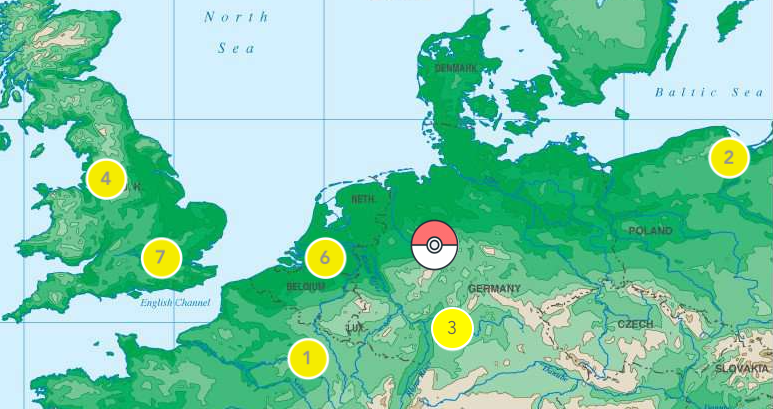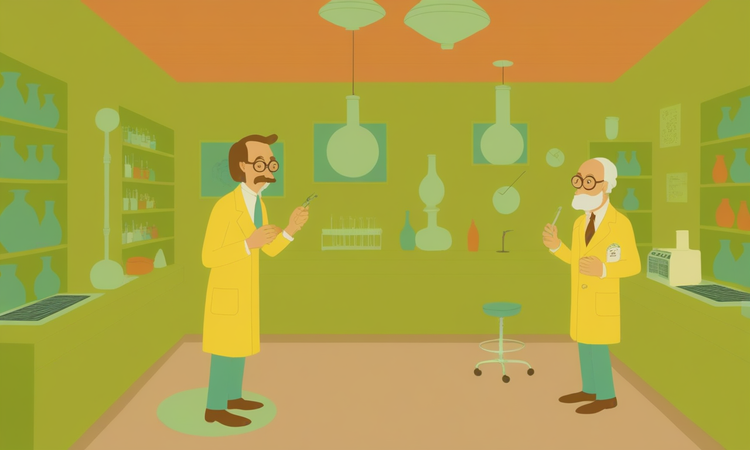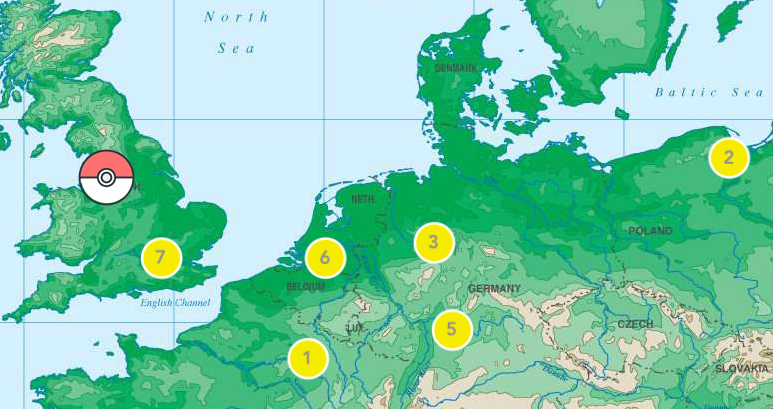A retrospective
This is going to be a long one, so let me just start with the TL;dr:
In June, I ran the first version of a cohort-based course I designed called Smart Creative Leadership. It was very much a v1 - good enough that I have more conviction about its existing value and potential, but still in need of some serious work to fully realize that potential. The projects that form its foundation are solid; the cohort-based community piece needs some serious attention and reconsideration.
But I believe in it enough that I'm going to run it again this October. I'm mostly focused on B2B partnerships for it, but individuals can enroll too. If you want to send people from your company (or want to refer companies), let me know here.
If you want to know the real dirt on the course, read on...
The Genesis
As is so often the case, there were layers of learning that accumulated over years that got me thinking, "what the world needs now is a cohort-based course on how to lead differently." The first was the experience that every new manager has of being thrown into the deep end with no one showing or telling you what to do. That experience eventually lead me to develop a 6 month leadership accelerator for new managers that was pretty wildly successful and became a product that my former company scaled into half a dozen countries.
The second wave came from the challenge of leading through the ambiguous, unknown process of building new products and then refining, iterating, and scaling existing products...I frequently felt the shortcomings of typical management tools like KPIs, Gantt charts, and complex financial models - but I also recognized that those things had value, they just weren't well suited to the kind of creative, generative work that sits at the heart of innovative companies. For a while, I tried to retrofit the work into those tools, but I could see that it wasn't helping to create the right conditions for collaboration and alignment...so I started borrowing different techniques and tactics from places where I saw lots of generative collaboration. In time, I had honed my own toolkit for leading smart creative teams.
And then people started telling me that I was doing something unique, and I should share some of my tricks with others. I was pretty dubious at first; it felt like I had cobbled together a few idiosyncrasies that worked really well for me, but I wasn't so sure that it would be a great thing for other people to work through my own mental minefield.
Instead, I started talking to other people I had seen thrive in leading smart creative teams, and I talked to people I had seen thrive under smart creative leaders...and as I did, I began to recognize some very clear common threads and identified a common language behind some of what I had been doing myself. I wrote it up a brief document sharing what I had learned and put it on the shelf...
The First Test
...but it kind of stuck in my brain. Over the course of the next 4 months, I heard so many horror stories from so many different people working as designers, developers, makers, builders, etc. about their experiences of bad leadership. If I'm being honest, it pissed me off because I was seeing all of these people I enjoy and care about being driven to frustration and sometimes even misery - not out of malice, but out of incompetence. It wasn't good for them, and it certainly wasn't good for their companies - they had hired these brilliant people and were absolutely squandering their potential. It was driving me crazy.

But I wasn't at all convinced that the pain was as acute for the actual users as it was for me as a spectator, so I made a decision:
- I wasn't going to actually build a solution unless there were people out there who wanted it enough that they'd pay for it.
- I wasn't going to start out with a hardcore sales push. If the pain was acute enough, I could find a big enough early adopter base to test out some of my ideas.
So I told myself I'd actually run the course if I had 10 people who'd buy it, and I put together a basic landing page for people to sign up. My whole sales strategy was:
- I announced the pilot in this newsletter (and reminded about it a couple of times)
- I did 3 or 4 posts on LinkedIn
- I reached out to all of my past and present consulting clients to see if they wanted seats for their companies
Within a couple days I had my first B2C signup and a couple days after that someone had actually paid to secure their seat. I had really good response on the B2B front and had commitments for more than 10 seats within 2 weeks...which meant I had to actually go and build the damn thing.
The fun part
The legwork I had done through my original research meant that I had a really good outline already, and I had spent the last couple years of my life leading the development of a cohort-based course platform and the accompanying content...so it wasn't too difficult to actually build the course. Time consuming? Yes. Difficult? Only to the extent that I made it difficult by trying out new things, forcing myself to learn new software, etc. But, come on, that's why you decidey to make something new in the first place.
It felt like being a big budget Hollywood director who decided to do an independent film with no crew (Not exactly no crew - in May I did bring onboard 2 university interns, and they were critical to the project). Soderberghian, let's call it. There is some legitimate pleasure to be found in days with almost no meetings and just time to bring a vision to life.

The whole thing was about 75% done by the time the course actually launched to participants. Which was according to plan - in my experience, the hardest part is figuring out model for the repeatable mechanic and building the first one. After that, even as you deviate and experiment with that model, there's an existing form and logic to fall back on. I also didn't want to lock everything in, run the first project, realize that it wasn't working, and then have to completely rework everything after (Fortunately, this isn't ominous foreshadowing).
All told, I created about 110 pages of original content for the course, plus curating resources, plus another 40 pages or so of emails. And I did 6 hours of expert interviews during the course itself. I wouldn't care about those numbers if I didn't think the underlying content and experience that it represents wasn't really good...but I do think it's really good.
The real deal
We launched on June 1 with 19 participants - 7 had bought the course for themselves, 12 had the course provided by their companies.
I had defined some specific measures of success up front:
- >80% of participants complete and submit all 4 projects.
- >50% of participants provide us with referrals for a future cohort (You may be thinking, "what about NPS?" I am an unapologetic NPS hater for the most part. Whenever you can, measure behavior instead of sentiment. It means a lot more if there are fewer people who actively promote this course than if there are many people who say they would but don't)
- At the same time, we want to build the course in such a way that it can be rerun in the future for 10x as many participants at a time, which means building reusable content, automating a lot of the communication and interaction touchpoints, and making our systems integrate so they can run with minimal additional effort.
Here's how the month played out:
- 17 out of 19 participants activated (meaning they logged in and started the course). The two main platforms for delivery were Eduflow and Discord. Eduflow was a rousing success. Discord was pretty meh.
- 12 out of 17 activated participants submitted at least 1 out of the 4 projects.
- 6 out of 12 submitted all 4 projects. As you might expect, completion rate decreased from project 1 to project 4...the biggest drop off was from project 2 to project 3, with almost no drop off from project 1 to project 2.
- 8 out of 17 provided in depth feedback after the course
- 4 out of 17 organically asked if they could make referrals for future cohorts
By the numbers, we're somewhere in the middle of the road. No matter how you slice it, we were far short of 80% of participants submitting all 4 projects - but that metric may have been wildly optimistic. The jury is still out on whether we'll get 50% or more providing a referral (I haven't asked them to yet), but the organic request from 25% is encouraging. On the last front, though, I think the delivery model is solid (with a few tweaks) and could easily run with 100-200 participants at a time.
And that's OK - we're not playing with an actual baseline to start with. Too often, v1 products are overly dependent on quantitative metrics when the reality is that they should be assessed a lot more subjectively.
So here's the subjective assessment that really matters: there was a strong enough signal coming through from a large enough group of people that I can say confidently that there's a market for this - enough potential of a match between a real user and this kind of solution. It still needs some work, but the core of the concept seems sound...or at least sound enough to merit a second version.
What's next?
That's the natural question, right?
The easy answer is, "I'm going to do it again."
But I learned a lot the first time, so I'm going to change a few things up.
The biggest change: the first time through I stubbornly insisted that the whole thing could be done asynchronously. I still think it could be done that way, but I'm going to introduce some optional synchronous elements. I actually ended up testing a few of these out during the course itself, and I think they're pretty good - but participants need to know when they're happening ahead of time so they can schedule around them. As part of this, there's also going to be a synchronous kickoff session to get everyone together and begin the process of forming relationships.
The second change: I'm going to ramp down the intensity...4 projects in 4 weeks was too much for most people, and even among the people who got them all done almost everyone had at least 1 week when they were late. I'm still thinking about a few ways to do this - in the current version, the course is designed with a long tail: participants still have access and can complete the projects for 6 months after the course officially finishes. That will still be true, but there's so much benefit in the cohort-based approach, and I want to figure out how to make it concentrated, intense, but still accessible.
And then there are some tweaks...more visuals to be integrated, more audio (I'm deliberately avoiding video, not just because it's more intensive from a production standpoint, but because it demands full attention whereas people can listen to audio and scan text & images at their own pace much more easily), some content that could be clarified, some that could be cut out altogether.
Also, my favorite part of the whole course was the interviews I did with other leaders in the field. These were recorded and shared with all of the participants, and I'm going to keep doing them (I've got a couple more queued up already) and am thinking a lot about how I'll continue to share that wisdom.
Lingering questions
The biggest thing I'm still thinking about has to do with that question of how to ramp down intensity.
- Is it actually 2 courses? I could imagine splitting it into a 1 month course with 2 projects called "Smart Creative Leadership" and another of the same format called "Smart Creative Teams"...but is that stretching it too far? Is that too complicated as an end user experience?
- Is it one course that runs longer? If so, is it 6 weeks? 8 weeks?
- What's the right price? I priced it at $250 this time around, including 2 coaching sessions. I knew from the beginning the coaching sessions weren't something I was going to scale with. Fortunately, I'm pretty sure the coaching session weren't the main source of value. I had multiple people immediately tell me that it was underpriced. Looking at the market and comparing it with the offerings on something like Maven or Section 4, that is probably true. But I also want to make sure it's accessible for people in smaller companies, and especially companies in emerging markets. Still working on how to navigate this dynamic.
- Where do we find the right participants? An interesting thing happened that I didn't expect: whether someone bought the course for themself or received it from their company was not at all predictive of engagement. There were highly engaged participants in both segments and non-engaged participants in both segments. But there was a clear throughline among the most active participants: either they were new leaders or they were leading a newly forming team. That suggests to me that the B2B market is for growth stage companies. If you've read this far, wow...and if you know of some growth stage companies who might want this course, hit reply and let me know! (or, you know, hit that button right there and pass this on to them)






Member discussion